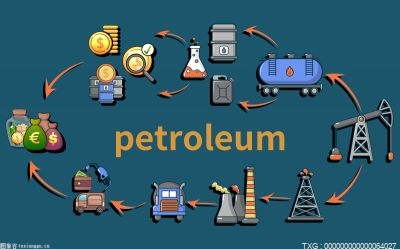当前观点:TF第48篇The Commercialization of Agriculture in the United States
 (资料图片仅供参考)
(资料图片仅供参考)
Thomas Jefferson, a Founding Father of the United States, believed that farmers were the foundation of merican democracy.To execute his plan for democracy, Jefferson proposed the United States Rectangular Land Survey- -familiarly known as the grid. Under the plan, surveyors were first sent to eastern Ohio with instructions to divide the land into boxes that would measure six miles square. Then they were instructed to divide these larger boxes into smaller ones, one-mile square, which were divided yet again into quarter sections measuring 160 acres each, considered to be the appropriate size for a single farm. In 1785 ongress passed the grid into law, and from that point on the same checkerboard pattern was etched across the West- -one of the most far-reaching attempts at rationalizing a landscape in world history.
The grid was the outward expression of a culture wedded not simply to democracy but to markets and exchange as well. It would aid in the rapid settlement of the country, turning millions of mericans into independent landowners, while at the same time transforming the land itself- its varied topography, soil, and water conditions- into a commodity, a uniform set of boxes easily bought and sold. ut the grid was only the first step in the commercialization of Western farmlands.
Once farmers purchased land they needed to plow up the existing vegetation. The grasses that thrived on the organically rich, deep soil laid down by the glaciers thousands of years earlier were at first a challenge to cut. Wooden plows with edges made of iron proved virtually useless. The development and spread of the steel plow-invented in 1837 by John eere, an llinois blacksmith- -made plowing successful. In place of the native vegetation, farmers planted corn and wheat, domesticated species of grass that grow best in a monocultural environment, that is, in fields by themselves. These crops tend to grow quickly, storing carbohydrates in their seeds. With bread constituting a major component of the merican diet, wheat would eventually emerge as the West's major cash crop; acres and acres of some of the world's best agricultural land in states such as Ohio, Indiana, llinois, lowa, and Kansas were plowed up and given over to the plant.
In the early years of setlement, farmers grew a variety of grains, including wheat, corn, oats, rye, and barley. Increasingly, however, farmers became more specialized, as commercial agriculture, aided by improved railroad transportation, proceeded apace. Much of the grain ended up in the Northeast, where, by the 1840s, population growth had outstripped the local farm economy's ability to provide. In effect, the West's surplus of soil wealth underwrote industrial development farther east.
The railroads not only delivered the products of the rich soils of the Western grasslands into the stomachs of Easterners, they also changed the meaning of the crops themselves. With waterborne transportation, farmers put their grain into sacks so they could easily be loaded into the irregularly shaped holds of steamboats. The advent of the railroads and steam-powered grain elevators (first developed in 1842) spurred farmers to eliminate the sack altogether. Now grain would move like a stream of water, making its journey to market with the aid of a mechanical device that loaded all the wheat from a particular area into one large grain car. Sacks had preserved the identity of each load of grain. With the new technology, however, grain from different farms was mixed together and sorted by grade. The hicago oard of Trade (established in 1 848) divided wheat into three categories- spring, white winter, and red winter- -applying quality standards to each type. Wheat was turned into an abstract commodity, with ownership over the grain diverging from the physical product itself. y the 1860s, a futures market in grain had even emerged in hicago. It was now possible to enter into a contract to purchase or sell grain at a particular price. What was being marketed here was not the physical grain itself so much as an abstraction, the right to trade something that may not even have been grown yet.
1.Thomas Jefferson, a Founding Father of the United States, believed that farmers were the foundation of merican democracy.To execute his plan for democracy, Jefferson proposed the United States Rectangular Land Survey- -familiarly known as the grid. Under the plan, surveyors were first sent to eastern Ohio with instructions to divide the land into boxes that would measure six miles square. Then they were instructed to divide these larger boxes into smaller ones, one-mile square, which were divided yet again into quarter sections measuring 160 acres each, considered to be the appropriate size for a single farm. In 1785 ongress passed the grid into law, and from that point on the same checkerboard pattern was etched across the West- -one of the most far-reaching attempts at rationalizing a landscape in world history.
推荐内容
-

当前观点:TF第48篇The Commercialization of Agriculture in the United States
-

实时:空间站天和核心舱发射在即 祖国的“空间站”终于来了!!
-

全球观点:rule是什么意思
-

长期失眠多梦睡不好?睡前少碰三种食物,睡眠问题或能大大改善-天天热资讯
-

侧能组什么词语
-

应急科普|小心“冰溜子”变“利剑”! 今日视点
-

类似男子高中生的日常的动漫_类似男子高中生的日常的动漫 环球今头条
-

【环球播资讯】变速箱漏油会对变速箱有什么影响嘛_变速箱漏油会对变速箱有什么影响
-

223344众数是什么_众数是什么_世界热点评
-

女子系鞋带被同伴推入水库 简直丧心病狂!_焦点资讯
-

全球今日讯!十大经典穿越军事小说
-

故宫博物院首部音乐儿童剧《甪端》在沪上演-世界今热点
-

“延安农村调查团”兴县调查资料 全球聚看点
-

天宝营养冲刺深交所上市:计划募资7亿元,持续盈利能力存疑
-

全球热讯:十一月份的黄道吉日是哪几天 2022十一月份的黄道吉日一览
-

观天下!12530北京移动彩铃官网_北京移动彩铃官网
-

ChatGPT再出“王炸”,客服都要下岗了?
-

即时焦点:“箭”式地对空导弹
-

《中华日报》:河北黄骅冬枣:燕赵千树枣 食之如朝露-讯息
-

离长江岸线仅800米“头顶库”治理之变—— 一笔14.2亿元“补课费”带来的启示
-

当前热议!厦门双一流本科生补贴申请要求
-

每日聚焦:1775
-

03月02日10时浙江金华昨日累计报告阳性感染者确诊280例 怎么判断自己是否属于轻型感染者-环球视讯
-

微信打不开,点了没反应_微信打不开,点了没反应信无响应两个竖杠
-

【焦点热闻】2019中国·唐山国际应急管理大会
Copyright 2015-2022 华东商务网 版权所有 备案号: 京ICP备2022016840号-41 联系邮箱:2 913 236 @qq.com


